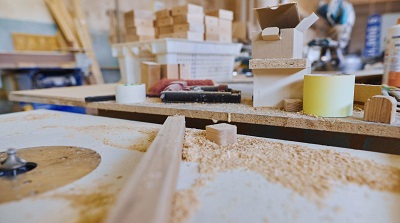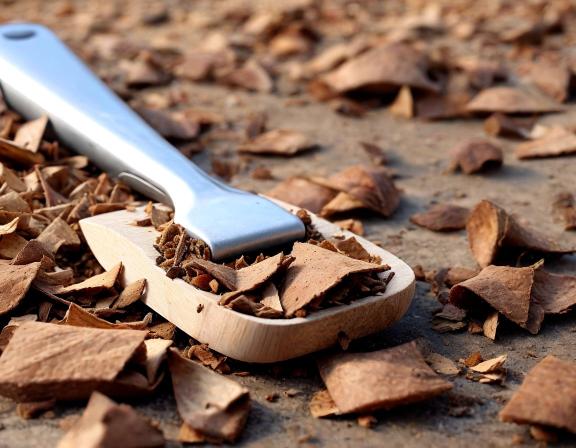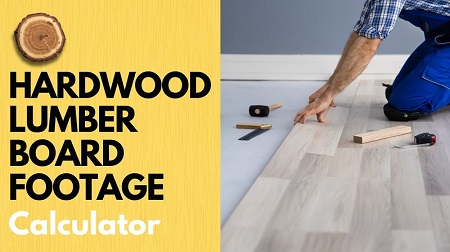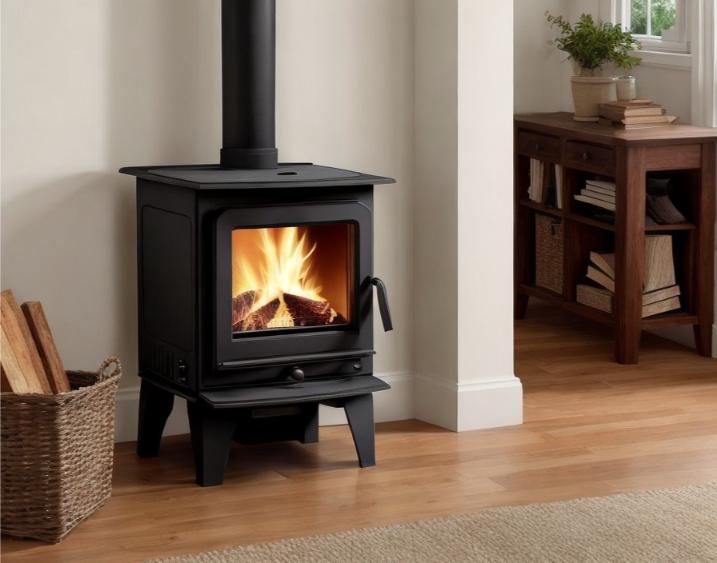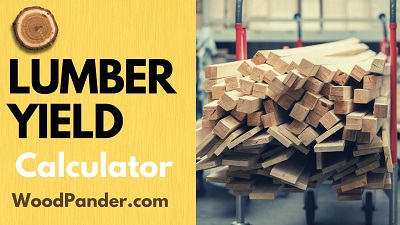Over the years, selecting the right amount of wood stain can be a daunting task for both novice and experienced DIY enthusiasts.
You want to ensure that your project looks its best without wasting materials or money.
This blog post will introduce you to a wood stain calculator, a useful tool that helps you determine the precise quantity of stain needed for your specific woodworking project. By utilizing this calculator, you can maximize your efficiency and achieve a flawless finish on your work.
Wood Stain Calculator
Understanding Wood Stains
Before entering into your wood project, it’s necessary to understand the various types of wood stains available and how they can enhance both the appearance and durability of your wood surfaces.
Types of Wood Stains
Wood stains come in various formulations, each designed for specific applications and effects. Here’s a breakdown:
| Type | Description |
| Oil-Based | Rich colors with a deep penetration. |
| Water-Based | Quick drying and low odor. |
| Gel Stains | Thick consistency for even application. |
| Varnish Stains | Combines stain with a protective finish. |
| Transparent | Enhances natural wood grain while adding color. |
- Oil-Based
- Water-Based
- Gel Stains
- Varnish Stains
- Transparent
Any of these options can enhance your wood projects beautifully.
Benefits of Using Wood Stain
For homeowners and woodworkers alike, using wood stain can significantly enhance the beauty and longevity of your wooden surfaces.
It provides not just a decorative finish, but also protection against moisture, UV rays, and wear. Staining enhances the wood’s grain, bringing out its natural beauty, while also allowing you to customize colors to match your décor. By choosing the right stain, you can extend the life of your wood surfaces and minimize maintenance costs.
Preparing for Staining
While preparing for staining can seem daunting, taking the right steps will ensure a superior finish. Start by selecting the proper wood type and gathering all necessary supplies. This careful preparation will not only make your project more efficient but will also enhance the wood’s natural beauty as the stain is applied.
Selecting the Right Wood
An important aspect of achieving beautiful results is selecting the right wood for your project. Consider hardwoods like oak or maple for durability, or softer woods like pine for ease of staining. Each type will absorb the stain differently, affecting the final appearance.
Necessary Tools and Materials
Staining your wood requires specific tools and materials for optimal results. Essential items include wood stain, a clean cloth or brush for application, sandpaper, and a protective finish like polyurethane. Having these tools on hand not only simplifies the process but also improves the quality of your work.
Wood staining is an art that requires not just skill but also the right equipment. Ensure you have high-quality brushes or foam applicators to achieve an even coat. Sandpaper is vital for preparing the wood surface, and clean rags help in managing the stain application. Additionally, consider using a drop cloth to protect your work area, and be sure to have adequate ventilation if you’re using solvent-based stains to ensure safety during the process.
The Wood Stain Calculator Explained
The Wood Stain Calculator is a valuable tool that simplifies the process of determining how much stain you need for your project. By entering specific measurements of your wood surfaces, the calculator provides you with an accurate estimate of the stain quantity required, ensuring you make informed decisions before starting your staining job. This tool saves you time, money, and the hassle of running back to the store for more stain.
How the Calculator Works
Wood stain calculators function by taking the dimensions of your project area and factoring in the type of wood, its porosity, and the stain product’s application rates. You input the relevant details, such as length and width, and the calculator does the math to give you a precise estimate of how much stain you should purchase. This efficiency allows you to get the job done with minimal waste.
Calculating Coverage Area
Calculator coverage area calculations are crucial for ensuring you buy the right amount of stain for your wood surfaces. By understanding the square footage you need to cover and the specific product’s coverage rate, you can avoid running short or over-purchasing. It’s crucial to measure accurately and select the right product, as different stains cover varying areas.
Another crucial aspect of calculating coverage area is recognizing factors that can influence the amount of stain you will need, such as surface condition and wood texture. For instance, rough or porous wood may absorb more stain, requiring you to adjust your estimates accordingly. Additionally, you should consider how many coats you plan to apply, as this will also affect your total stain requirement. Always round up slightly to cover unforeseen circumstances, ensuring a smooth application process without interruptions.
Estimating Wood Stain Requirements
Now that you are ready to enhance your wood surfaces, understanding how to estimate wood stain requirements is necessary. By calculating the amount of stain needed, you can ensure an even application and avoid running out mid-project. Keep in mind that factors such as wood type, surface texture, and the number of coats will impact your calculations for optimal results.
Factors Influencing Stain Usage
Any estimate of your stain requirements will depend on several important factors, including:
- The type of wood you are staining
- Surface texture and porosity
- The stain’s consistency and opacity
- The number of coats you plan to apply
- Your application method (brush, spray, etc.)
Any adjustments to your initial calculations may be necessary as you progress through your project.
Adjusting for Surface Imperfections
Stain application can be tricky when dealing with surface imperfections. Factors like knots, cracks, or rough areas will require additional stain to ensure even coverage and proper absorption.
Influencing the overall stain usage, you need to be mindful of these imperfections. They can lead to varying absorption rates, which may result in a patchy finish if not accounted for. Take the time to assess your wood surface thoroughly, and consider applying a primer or conditioner, especially on softer woods, to create a smooth base for your stain. This will enhance both the final appearance and durability of your woodwork.
Application Techniques
All wood staining projects require proper application techniques to achieve a seamless and professional finish. Understanding the various methods and tips for ensuring an even coverage will enhance the appearance of your wood surfaces, elevate your project results, and prolong the lifespan of the stain. Selecting the right strategy will ultimately help you achieve the desired aesthetics and protect your investment.
Methods of Application
With several methods available for applying wood stain, choosing the right one depends on your project’s scale and desired effect. You can use brushes, rollers, rags, or spray systems to apply the stain evenly. Each method offers unique benefits; for instance, brushes provide better control, while spray systems cover large areas quickly. Evaluate your needs to select the best application method for your circumstances.
Tips for Even Coverage
On your wood staining journey, achieving even coverage is crucial for a consistent and professional look. Here are some tips to ensure your stain goes on smoothly:
- Work in small sections to maintain control.
- Use a high-quality applicator suited for your chosen method.
- Apply stain in the same direction as the wood grain.
- Wipe excess stain promptly to avoid blotching.
Recognizing the importance of these techniques will enhance the quality of your finish and lead to a successful wood staining project.
Coverage is vital for achieving that flawless appearance. Pay attention to factors such as wood type, humidity, and stain concentration, as they can influence absorption and overall finish. Keep these additional tips in mind:
- Test the stain on a scrap piece of wood to gauge absorption.
- Consider using a pre-stain conditioner for soft or porous woods.
- Apply multiple thin coats rather than one thick coat for better control and evenness.
Recognizing these factors will help you tailor your application strategy to your specific materials and conditions, ensuring your project stands out beautifully.
Maintenance and Care
Once again, maintaining the beauty of your stained wood is necessary for longevity. Regular cleaning and inspections will help you spot potential issues before they become significant problems. Ensure that you treat your stained surfaces with care, avoiding harsh chemicals that could strip the stain or damage the wood. By taking the right steps in maintenance, you can enjoy the rich appearance of your wood for many years to come.
Longevity of Stained Wood
Wood is a natural material that requires proper care to maintain its integrity. The lifespan of stained wood varies depending on factors like the type of wood, the quality of the stain, and the environmental conditions it faces. When maintained effectively, stained wood can last for decades, preserving its beauty and functionality.
Reapplication Guidelines
Stained wood surfaces may need reapplication over time to maintain their appearance and protection.
Care for your stained wood by keeping an eye on its condition. Typically, you should plan to reapply stain every 3 to 5 years, depending on exposure to sunlight, moisture levels, and wear. Before reapplication, thoroughly clean the surface and ensure it’s dry. If the current stain shows signs of fading or peeling, you might need to sand the area lightly before applying a new coat for optimal adhesion. Maintaining a schedule for reapplication helps keep your stained wood looking fresh and vibrant, safeguarding it against the elements.
Conclusion
On the whole, using a wood stain calculator can significantly enhance your staining projects by ensuring you purchase the correct amount of stain needed for your specific surfaces. By inputting your measurements, you gain a precise estimate tailored to your requirements, thereby minimizing waste and saving money. This tool not only streamlines your preparation process but also enhances the final results, allowing you to achieve that perfect finish with confidence. Make the most of your DIY woodworking ventures by integrating a wood stain calculator into your workflow.

